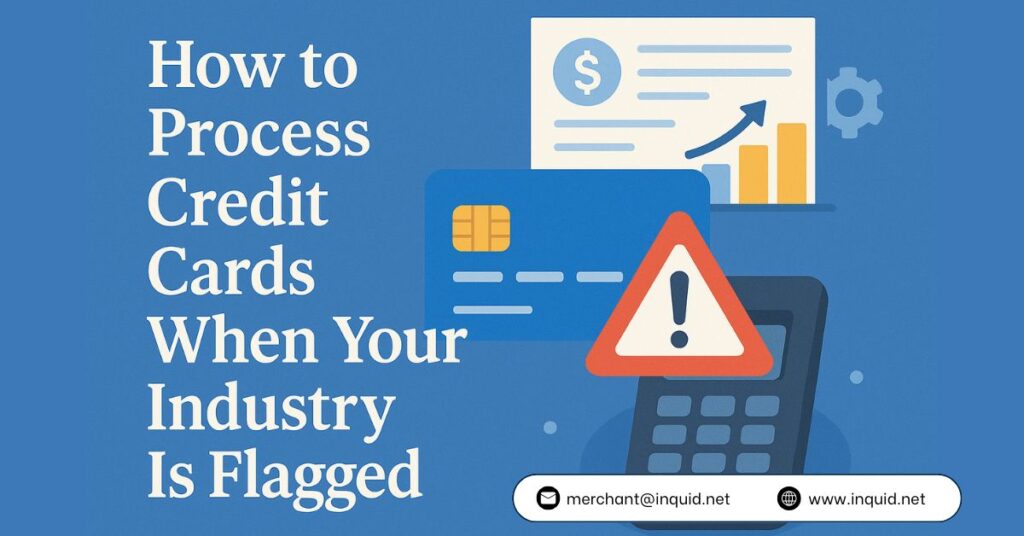
Getting flagged as a high-risk business changes how payment processors treat you. Whether you’re in sectors like online gaming, adult services, supplements, or digital goods, traditional providers might reject your application outright. That doesn’t mean you can’t process credit cards in high-risk industry scenarios—it just means you need to approach it differently.
This guide breaks down what “being flagged” really means, why it happens, and how you can still set up reliable credit card processing for your business.
Why Your Business Gets Labeled High-Risk
High-risk doesn’t always mean illegal or unethical. Often, it’s about how processors evaluate the potential for disputes, chargebacks, or regulatory issues.
Here are some common reasons:
- Industry reputation (e.g., casinos, CBD, adult content)
- High average ticket size
- Frequent refunds or chargebacks
- Subscription-based models
- Operating across borders
- Poor credit history or previous account termination
Getting flagged might feel frustrating, but it simply means your business falls outside the comfort zone of traditional banks or low-risk processors.
Start With the Right Payment Partner
Most standard processors don’t handle flagged industries. You’ll need a provider that specializes in high-risk merchant accounts. These companies have more experience dealing with chargeback-prone businesses and know how to build safeguards that banks require.
Look for a provider that offers high-risk credit card processing with transparent pricing, solid dispute handling, and fast onboarding. They should also help you stay within acceptable chargeback limits and support fraud prevention tools like AVS, CVV checks, and 3D Secure.
Application Requirements Are Stricter—Be Prepared
High-risk processors look deeper into your business before approval. Expect to share more documentation than usual:
- Valid government ID
- Business registration details
- Bank statements
- Processing history (if available)
- Refund and privacy policies
Be upfront about your business model. Hiding details to try and “pass” as low-risk can backfire. If your provider finds out later, you risk frozen funds or immediate termination.
What to Do if You’re Declined
Rejections are common—but not final. Sometimes it’s about the processor’s internal rules, not your business itself. If you get turned down:
- Ask for specifics – Knowing why helps you fix the issue or look for a better match.
- Improve your documents – Clean up your site, make policies clearer, and organize your financial records.
- Apply with a provider experienced in instant approvals – Some companies offer credit card processing with fast approvals designed for flagged businesses.
Minimize Risks Once You’re Approved
Once you’re up and running, keeping your account in good standing becomes top priority.
Here’s what helps:
- Keep chargebacks low: Respond quickly to disputes, use clear billing descriptors, and offer support contact info on every page.
- Maintain consistent volume: Sudden spikes in transactions can trigger reviews or holds.
- Follow local regulations: Especially if you’re working across borders or in regulated sectors.
- Stay transparent: Don’t switch products, services, or marketing tactics without telling your provider.
Watch Out for Rolling Reserves and Holds
High-risk processors sometimes place rolling reserves—holding a percentage of your sales temporarily—to protect against chargebacks. While this may feel like a red flag, it’s a common part of how you process credit cards in high-risk industry setups and can decrease over time as you prove your reliability.
Also, avoid large transaction spikes or unexplainable surges in traffic. These can result in frozen payouts or additional verification requests.
Alternative Options Can Help Too
If card approval is taking time or you’re dealing with stricter scrutiny, it’s smart to offer other payment methods in parallel. Think e-wallets, crypto, bank transfers, or region-specific options.
Many high-risk businesses use a mix of credit cards and alternatives to reduce dependency and improve conversion rates.
Final Thoughts
Getting flagged as high-risk doesn’t mean your business can’t operate—it just means you need the right tools and partners. With the proper approach, you can set up credit card payments that work for your business model, avoid common pitfalls, and keep transactions flowing.
To understand how high-risk processing really works and what rules you should follow, check out credit card payment processing rules. Or if you’re ready to start with a provider that supports high-risk industries, visit inquid for more options.
